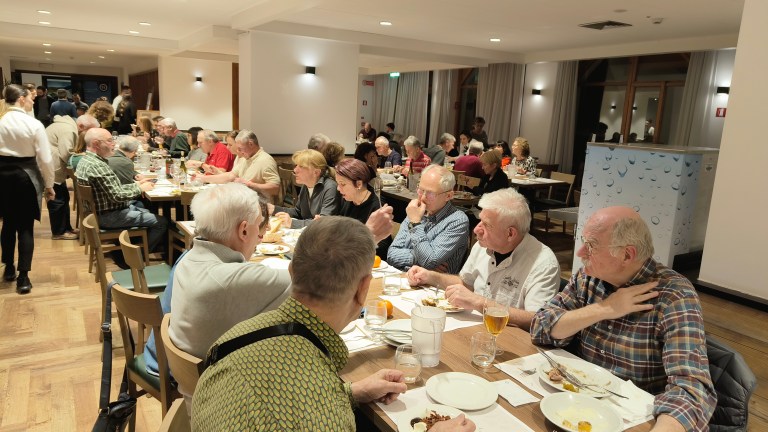Przyslala Basia Jaworski

Gerrit van Honthorst (1590-1656), King David Playing the Harp (1611), Centraal Museum, Utrecht, Holland
HIS SONG WILL NOT BE SILENCED *
A question of conscience: is there such a thing as Jewish music? If so, what is it? Is it klezmer? The Chassidic Nigunim? The Spanish romanceros, the Yiddish songs, the synagogal chants, the psalms? And: can classical music be Jewish? Is it up to the composer? Is the music Jewish if the composer is Jewish? Or is it due to the themes used by him/her? A small quest.
Music played an important role in the lives of the ancient Hebrews. Just like most peoples of the East they were very musical and music, dance and singing were of great importance to them: both in daily life and in the synagogal services. They also played different instruments: for example, one of the women of Solomon brought more than a thousand different musical instruments from Egypt.
After the destruction of The Temple all instruments disappeared from the synagogues- except for the sjofar – and only in the 19th century did they return there. Unfortunately there is little written music from before the year 1700. However, in 1917 the oldest known music manuscript to date was found – it dates from around
KOL NIDRE

The best-known prayer from the Jewish liturgy is undoubtedly Kol Nidre: a request for forgiveness and for the annulment of all vows made to God and to oneself during the past year. The prayer was said to have originated before the destruction of the Temple, but there are also legends that put the origin of the prayer in the hands of the Marranos (Spanish Jews, who converted to the Catholic faith under the pressure of the Inquisition, but remained Jewish at heart).
It is certain that Rabbi Jehuda Gaon already introduced Col Nidre in his synagogue in Sura in 720. It is also a fact that the melody, as we know it, has some affinity with a well-known Catalan song. Over the years it has been arranged by several cantors, the most famous version dates from 1871 and was made by Abraham Baer.
The melody became a source of inspiration for many composers: the best known of them is the work for cello and orchestra by Max Bruch.
The motifs of Kol Nidre can also be found in Paul Dessau’s symphony and in the fifth movement of the String Quartet Op. 131 by Ludwig van Beethoven. And then we should not forget Arnold Schönberg’s “Kol Nidre” for speaking voice, choir and orchestra. He composed it in 1939, commissioned by one of the Jewish organizations.
Calosc TUTAJ
Kategorie: Muzyka
